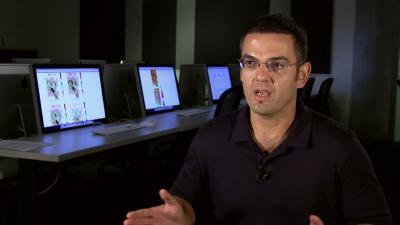Cool roofs, green roofs and hybrids of the two are all of the rage for city planners who want to do something about greenhouse-gas induced warming.
They sound great but is it going to work, or is it another idealized wish that incurs cost but has little benefit (like replacing spoons in the Congressional cafeteria with corn-based alternatives that melted in soup and ending up being worse for the environment) outside public relations campaigns?
A team led by Matei Georgescu, an Arizona State University assistant professor in the School of Geographical Sciences and Urban Planning, decided to try and figure it out.
They claim that even outside greenhouse-gas induced climate change, end-of-century urban expansion within the U.S. can raise near surface temperatures by up to 3 C (nearly 6 F) for some megapolitan areas. But the latest fad in urban adaptation technologies varies seasonally and is geographically dependent.
Georgescu , Philip Morefield, Britta Bierwagen and Christopher Weaver, all of the U.S. Environmental Protection Agency, examined how these technologies fare across different geographies and climates of the U.S.

Matei Georgesc. Credit: Ken Fagan, Arizona State University
"This is the first time all of these approaches have been examined across various climates and geographies," said Georgescu. "We looked at each adaptation strategy and their impacts across all seasons, and we quantified consequences that extend to hydrology (rainfall), climate and energy. We found geography matters," he added.
Specifically, what works in California's Central Valley, like cool roofs, does not necessarily provide the same benefits to other regions of the U.S., like Florida, Georgescu said. Assessing consequences that extend beyond near surface temperatures, like rainfall and energy demand, reveals important tradeoffs that are oftentimes unaccounted for.
Cool roofs are a good example. In an effort to reflect incoming solar radiation, and therefore cools buildings and lessen energy demand during summer, painting one's roof white has been proposed as an effective strategy. Cool roofs have been found to be particularly effective for certain areas during summertime.
However, during winter these same urban adaptation strategies when deployed in northerly locations, further cool the environment and consequently require additional heating to maintain comfort levels. This is an important seasonal contrast between cool roofs (i.e. highly reflective) and green roofs (i.e. highly transpiring). While green roofs do not cool the environment as much during summer, they also do not compromise summertime energy savings with additional energy demand during winter.
"The energy savings gained during the summer season, for some regions, is nearly entirely lost during the winter season," Georgescu said.
In Florida, and to a lesser extent Southwestern states of the U.S., there is a very different effect caused by cool roofs.
"In Florida, our simulations indicate a significant reduction in precipitation. The deployment of cool roofs results in a 2 to 4 millimeter per day reduction in rainfall, a considerable amount (nearly 50 percent) that will have implications for water availability, reduced stream flow and negative consequences for ecosystems," he said. "For Florida, cool roofs may not be the optimal way to battle the urban heat island because of these unintended consequences."
Georgescu said the researchers did not intend to rate urban adaptation technologies as much as to shed light on each technology's advantages and disadvantages.
"We simply wanted to get all of the technologies on a level playing field and draw out the issues associated with each one, across place and across time."
Overall, the researchers suggest that judicious planning and design choices should be considered in trying to counteract rising temperatures caused by urban sprawl and greenhouse gasses. They add that, "urban-induced climate change depends on specific geographic factors that must be assessed when choosing optimal approaches, as opposed to one size fits all solutions."




Comments